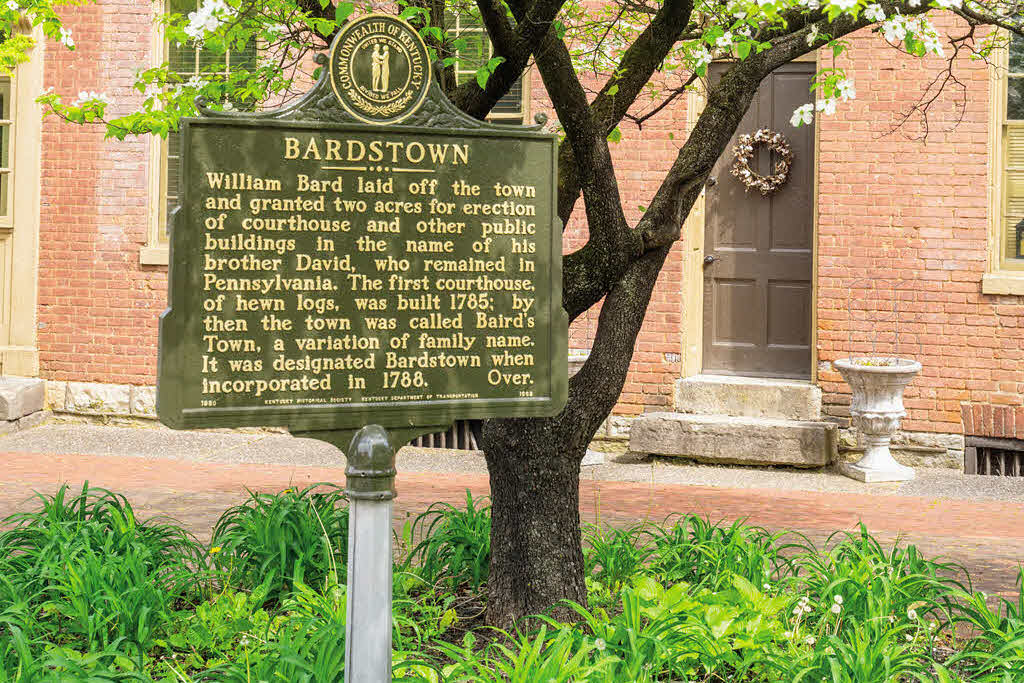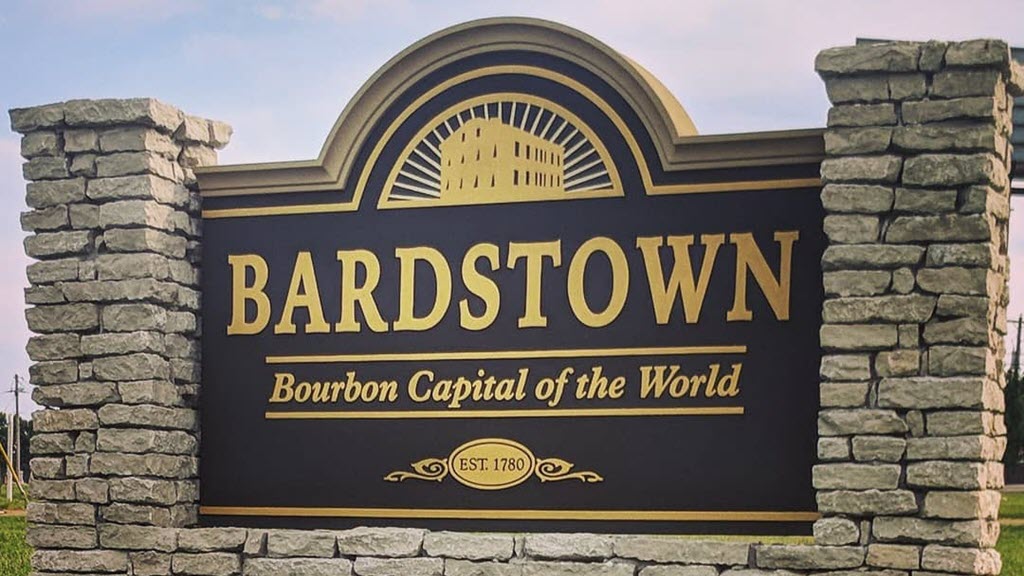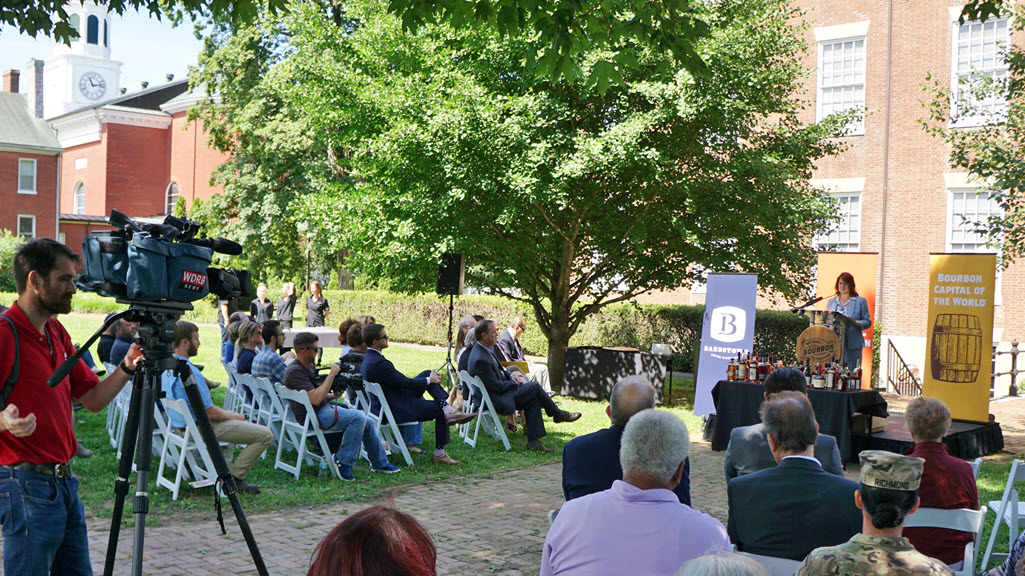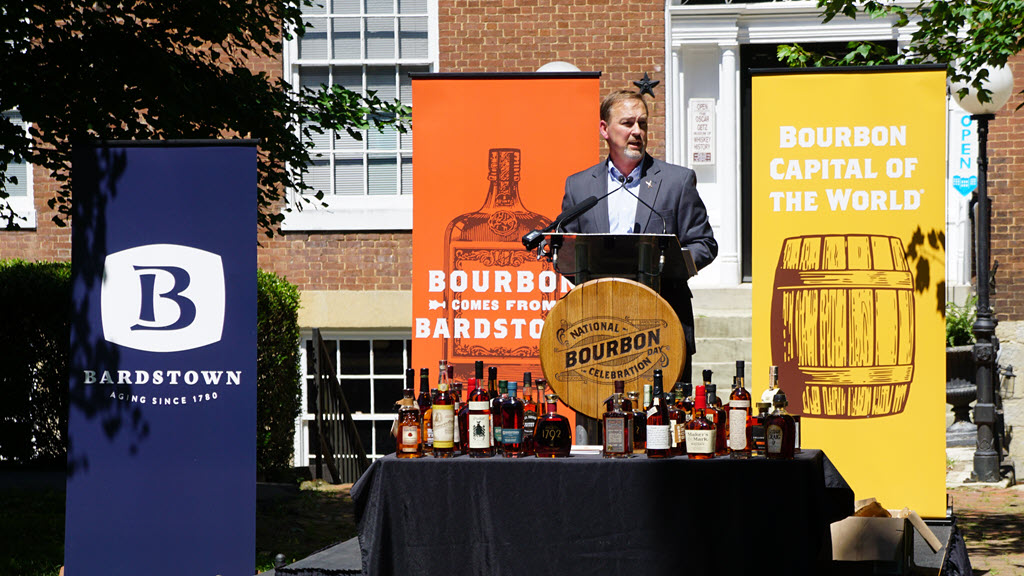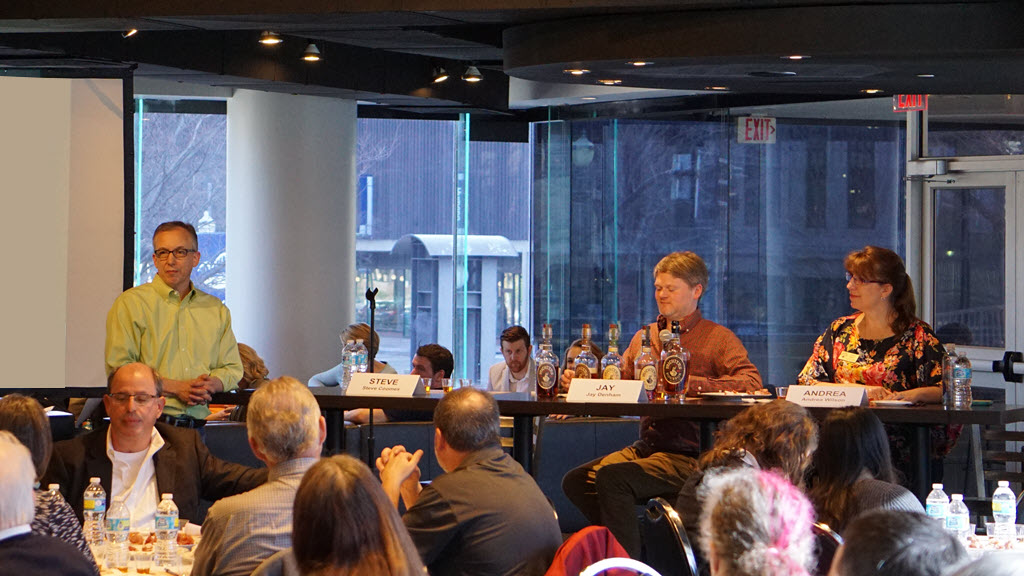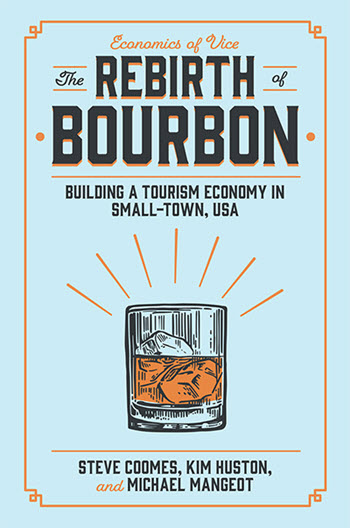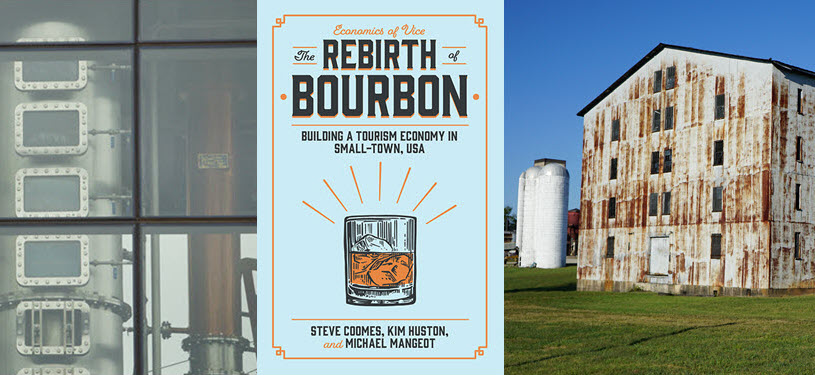
Kentucky bourbon’s journey from sin to signature industry has been evolving for hundreds of years. Prior to Prohibition many states across the country were home to dozens or even hundreds of distilleries. When Prohibition became the law of the land only half a dozen distilleries in the U.S. were legally allowed to sell distilled spirits. Those six distilleries, all located in Kentucky, were only allowed to sell spirits for medicinal purposes (personally I take my medicine at least once daily). Post-Prohibition Kentucky was quick to restart distilled spirits production and now leads the nation as the state that produces 95% of the world’s Bourbon.
Today, bourbon is made in every state across the fruited plain but there is just one town and one county that is home to the “Bourbon Capital of the World™” and that is Bardstown, Nelson County, Kentucky. Bardstown is home to over a dozen distilleries some dating back to the 1800s, some that are in startup mode while others are still on the drawing board. The city is also home to the Kentucky Bourbon Festival, the nation’s original and longest running bourbon festival and Oscar Getz Museum of Whiskey History one of the only museum’s in the country dedicated to whiskey.
As the world’s thirst for bourbon continues to grow, Bardstown is in a unique position to quench that thirst. Bardstown is not only known for producing bourbon but it is also known for playing host to the bourbon lifestyle as it builds out its national and international reputation as a tourist destination.
The journey to the Bourbon Capital of the World didn’t just happen overnight. The folks in Bardstown have been working at it since its founding in 1780. Now there’s a new book out, “The Rebirth of Bourbon, Building a Tourism Economy in Small-Town, USA” that details the journey to becoming the Bourbon Capital of the World and where they want to go from here. We worked with the publisher of the book to bring you the sample chapter below to whet your appetite to purchase the entire 174 page book.
“This new book, The Rebirth of Bourbon; Building a Tourism Economy in Small-Town USA, tells the story of the booming bourbon industry and substantial economic impact that it, and the resulting explosion of bourbon tourism, has had on Bardstown and Nelson County,” Bardstown- Nelson County Tourism Executive Director Samantha Brady.
The Napa-fication of Kentucky
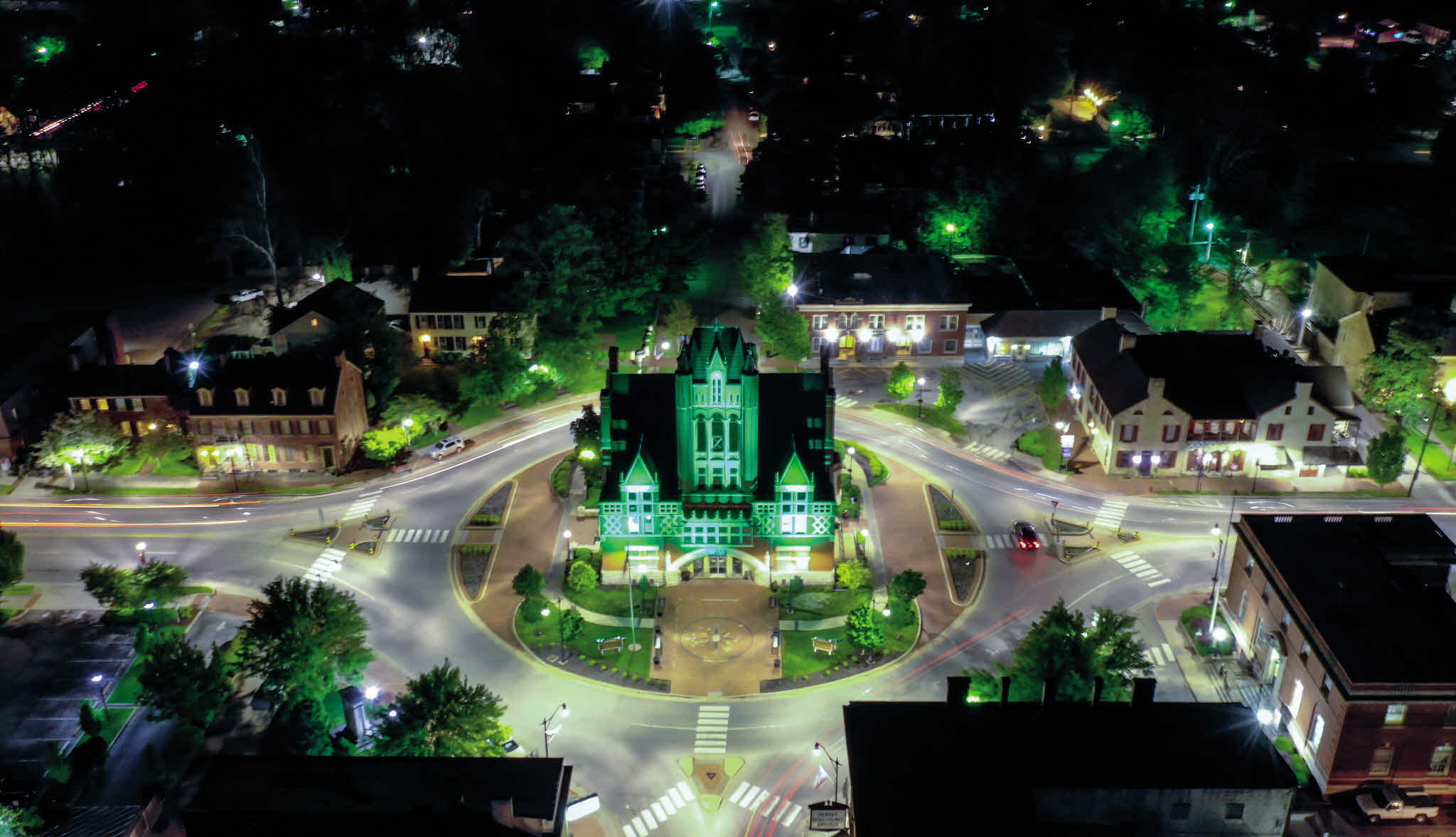
In January of 2019, Clay Risen, deputy op-ed editor for the New York times, wrote an article and penned the term “Napa-fication” that compared economic investments made in distilling communities to what happened in wine country decades ago.
“Apparently my quote in that article about building a bourbon tourism destination caught the attention of an editor from Emerald Publishing, a London Publishing company, who thought Bardstown’s bourbon industry and how our community has changed because of it would be a good subject for their new “Economics of Vice” series of books,” said President of the Nelson County Economic Development Agency and book co-author Kim Huston.
Huston partnered with then Bardstown-Nelson County Tourism Executive Director Mike Mangeot, now the Kentucky Commissioner of Tourism, to contract with Emerald Publishing to write the book. The two brought in Steve Coomes, award-winning bourbon and culinary freelance author to round out the writing for this new book.
Related Stories
What is the Napa-fication of Kentucky?
BARDSTOWN – The Definitive Coffee Table Book on ‘The Most Beautiful Small Town in America’
Brady says the book tells the story of the rising popularity of bourbon and the opportunities, challenges, traditions, and most importantly, people who have pushed the industry forward in Bardstown. Many of the most popular names in bourbon today contributed quotes, stories, and their memories of the rise of the bourbon industry. The book also features interviews with Bardstown and Nelson County leaders and select local entrepreneurs who are finding ways to innovate and reap the benefits of bourbon tourism.
Stay Informed: Sign up here for the Distillery Trail free email newsletter and be the first to get all the latest news, trends, job listings and events in your inbox.
Chapter 3: Cultivating and Managing Bourbon Tourism
A big opportunity that requires significant organization and strategy.
The “Merriam-Webster Dictionary” defines tourism as 1: the practice of traveling for recreation; 2: the guidance or management of tourists; 3a: the promotion or encouragement of touring; and 3b: the accommodation of tourists.
Nearly two decades into Nelson County’s management of its rapidly evolving bourbon tourism economy, community officials and whiskey distillers are still working to master definitions 2, 3a and 3b. At the surface, those aims may seem simple, but complications tied to their execution run powerfully and deeply for Bardstown.
To come remotely close to a “Napafication” of the town as it relates to bourbon tourism, countless changes must be made to everything from basic infrastructure to finding and training hospitality industry workers to serve what doubtless will be an ever-increasing number of sophisticated visitors.
Ten years before, it was named the Most Beautiful Small Town in America in 2012, Bardstown probably looked much as it did at the time of that designation. But a decade won’t have to expire from that point to see and sense how strikingly different Bardstown has become.
In 2012, there was no Bardstown Bourbon Co. or Lux Row Distillers, and neither of those companies nor Heaven Hill had begun their mega-warehouse-building binges. The Blind Pig Bourbon Market wasn’t even a thought in the minds of the men who later created it, and Mammy’s Kitchen was just a fraction of the size of its current operation. Guests of the Hampton Inn could look out its front door and see an empty green space, but now that view is forever altered by two competitor hotels under construction. Not so long ago the city removed its downtown parking meters because they weren’t needed. But today the construction of a public parking garage is a serious possibility because street spots are so scarce.
“We’ve seen a lot of change in the past few years, for sure,” said Bardstown Mayor Dick Heaton. “Much more change is coming, too, and we’re definitely busy trying to deal with it all.”
Get Organized!
Believing an organized and strategic effort was needed to address Bardstown’s growing tourism challenges, the Nelson County Economic Development Agency (NCEDA) formed the Bourbon Capital Community Alliance (BCCA) in 2017.
Discussions among BCCA volunteers made clear that the community wanted and expected more of itself as hosts in the Bourbon Capital, and that changes were needed to elevate the overall bourbon tourism experience.
The group compiled a lengthy list of primary and secondary goals:
Goal No. 1 sought to address immediate needs such as:
- Improved accommodations (more hotel beds), parking, infrastructure, transportation and bypass;
- brand messages and promotion;
- unique lodging;
- consistent marketing and branding messaging;
- year-round attractions for tourists and locals;
- promotion of the community’s personality;
- attraction of younger visitors and visitors in general to its downtown;
- improved nightlife;
- new business growth initiatives;
- national and international marketing initiatives; and
- increased number of short-term events and expressions.
Goal No. 2 asked what the committee wanted for Bardstown’s future.
- to promote Bardstown as the Bourbon Capital;
- a strategic plan that clarified viable options;
- improved visitor retention;
- larger event venues;
- economic development through jobs growth and talent attraction;
- community creativity and cooperation;
- consolidation of local groups and businesses;
- reduced bourbon industry taxes;
- wide-scale beautification projects;
- promotion of existing museums;
- technology improvements (i.e. downtown Bardstown-wide Wi-Fi and a Bourbon Navigator app); and
- lead visitors to start their Kentucky Bourbon Trail journeys here.
According to Gary Bishop, the board chairman at the outset of those discussions, the BCCA wanted the entire community to address those goals collectively and for the benefit of Nelson County. About 30 people representing a broad range of social segments contributed to the discussion.
“That number of people was a little more than we needed, but the nature of people in this town is to want to help,” Bishop said. “Bourbon tourism was at the center of it, but the discussion was around improving the quality of the whole city at the same time.”
Issues such as increased training of employees at restaurants, bars and hotels on everything bourbon received heightened attention. Committee members who’d visited California’s Wine Country pointed out that many hospitality industry employees there were trained in wine and vineyard knowledge and able to answer visitors’ questions about both. Making Bardstown’s hospitality employees similarly informed was a priority, the committee said.
Bishop said discussions also included overarching matters such as Bardstown’s long-recognized “Most Beautiful Small Town in America” designation: Was that slogan the marketing wagon to which the town should stay hitched, or should it now be “The Bourbon Capital of the World”?
Unlike Louisville, which had in 2014 claimed it was the bourbon capital, the BCCA concluded that Bardstown had many more reasons to justify its claim to the title. By virtue of its large and historic distilleries and warehouses spread all over the community, “we had that whole experience, the look of it, which Louisville doesn’t have,” Bishop said. “We recognized that it was our opportunity to claim the identity we already knew we had.”
Bishop, who stepped down from the committee to return to retirement in 2018, called the BCCA’s work a solid start and a good road map for improving the town’s bourbon tourism efforts.
“There’s a lot yet to be done, but the community is on board and wants to do it,” he said. “We have a plan in place, and now it’s time to follow the plan.”
Into Action
When Mike Mangeot took the job of executive director of the Bardstown-Nelson County Tourism Commission in 2018, he liked what he saw in the BCCA’s strategic plan. The only problem it presented was the length of its detailed tourism wish list.
“The challenge you always have in tourism is convincing people that you can’t be all things to all people,” Mangeot said. “I’m a believer of doing fewer things better, and that begins with focusing on things that set your community apart.”
Traditionally, Bardstown tourism leaned on the city’s history and organic beauty. But as Mangeot pointed out, the United States is full of similarly charming places with even deeper history.
“But no other place can say it’s the Bourbon Capital of the World®; it absolutely has that going for it,” he said. “Bardstown could call itself that and mean it and not have to work hard to convince others of that fact. That hook was truly unique and one I knew we could work with.”
Still, making such a claim, Mangeot said, would take nuance and smart branding. For example, Bardstown couldn’t focus on bourbon consumption out of concerns that some would assume it was a party town. As the Bourbon Capital, it had to encompass much more, such as being the place for bourbon history, bourbon cocktails, bourbon-inspired food and unique-to-Bardstown experiences.
“There’s a good chance that if you told the story of bourbon consumption, some would look at it and decide it wasn’t for them,” Mangeot said. “But when you make it about history, craftsmanship, authenticity and these amazing distilleries, that’s something completely different. When you can take them to a place where they can see, smell and taste bourbon being made, and where they can experience the smell of walking through a rickhouse, that’s a Bardstown experience.”
In 2018, Bardstown Tourism launched its “Bourbon Comes from Bardstown” marketing campaign, a digital and outdoor advertising effort Mangeot said that targeted Millennials – a group with a proven fondness for everything bourbon. By tailoring the messaging toward this single demographic, “it reached a target market where they live, work and play – we were fishing where the fish are instead of trying to reach a broader audience.”
Based on increased visits to Bardstown in 2019, the campaign has been a success. “We’ve been trending up 3 to 5% in recent years, but year to date for 2019, we’re trending significantly higher,” Mangeot said.
“Bourbon Comes from Bardstown” also was awarded Best Branding & Integrated Marketing Campaign at the 2019 US Travel Association ESTO Conference, and received some state-level honors, Mangeot said.
Change, whether actual or proposed, inevitably generates opposition to it, and that’s happened in Bardstown. Several interviewed for this book spoke of some locals’ resentment over bourbon promotion that doesn’t share an equal investment in attractions such as the Stephen Foster Story, the Civil War Museums and or My Old Kentucky Home State Park.
Toogie Dick is one of them. As the owner and operator of Kurtz Restaurant, Dick said she’s grateful that the bourbon boom “has increased our restaurant business tremendously.” But her concern is that as one entity grows as much as bourbon tourism has, it threatens to overshadow other more established attractions.
“I understand that change is important and sometimes necessary, but I don’t want Bardstown to change its image completely,” said Dick, who is 87. As the Stephen Foster Story’s board chair for two decades, Dick’s interest in preserving historic attractions like the musical is heartfelt. “I still want people to come and have the Bardstown experience I’ve known all my life.”
Nelson County Economic Development Association (NCEDA) president Kim Huston has heard concerns like Dick’s and others. And as a Bardstown native, she understands those parties’ perspectives and desires for the town.
“Bardstown was a tourism town long before the bourbon tourism part became so important, and the people who point that out are correct,” Huston said. “But the reality is bourbon is bonding us all right now. It’s that one economic development piece that affects the entire community. Whether it’s Main Street, bars, industrial recruitment and development here, it’s the one industry that’s all encompassing.”
Tourism statistics from 2019 support Huston’s position:
At Bardstown-area distilleries (including Jim Beam in Clermont and Maker’s Mark in Loretto), visits were up 9% as of November 2019 compared to all 12 months of 2018. According to the Bardstown-Nelson County Tourism Commission:
- Nearly 500,000 visits were recorded at those distilleries.
- Visits to other area attractions such as the Oscar Getz Museum of Whiskey, The Stephen Foster Amphitheater, My Old Kentucky Home State Park and others, however, totaled around 150,000: largely flat compared to the same period in 2018.
- In both categories, visitors from 42 states and 19 countries visited and signed the guest register at the Bardstown Tourism Welcome Center in 2019.
Mangeot added that the overwhelming majority of people who stop in at the city’s welcome center ask for bourbon-related information before inquiring about other tourism activities.
“Regardless of what they ask for, it gives our staff an opportunity to talk about what else to do in our town,” Mangeot said. “We’re always looking to answer their questions first and then cross-sell other attractions.”
Relative to comparisons made between Bardstown’s bourbon tourism growth and that which happened around winemaking in Napa Valley, Huston said Napa was fortunate that it didn’t have to adjust its tourism approach.
“Agriculture was the top industry in the area until California wines took off,” she said. “Bardstown has had all these other visitor venues for a long time, and now those are finding ways to segue somehow into bourbon tourism. But really, though, that piece of it hasn’t been too difficult. Most people support bourbon tourism and can see the impact it is having on Bardstown and Nelson County.”
Alice Willett Heaton managed My Old Kentucky Home State Park for 30 years and helped it become one of the state’s top attractions. She believes there’s plenty of room on the tourism stage for legacy components operating alongside of bourbon-related attractions.
“Bourbon doesn’t overshadow the others, so I don’t agree with people who say that,” said Heaton. “All of them have a presence because all depend on what each visitor is attracted to. All these attractions have gotten along for many years and can continue to well into the future.”
Where there’s room for improvement, Heaton said, is in improved cross-marketing of all attractions and collaboration between their operators.
“Just driving through town on your way to Heaven Hill or Willett or Barton, so many people pass right in front of My Old Kentucky Home State Park” and Federal Hill Manor Heaton said. “That’s a magnificent opportunity to create more engagement and collaboration between the distilleries and My Old Kentucky Home. … The better we make Bardstown and Nelson Country, the better the product is for everybody passing through.”
The New Bourbon Experience
Bardstown Bourbon Co. had barely begun distilling before then-CEO David Mandell was ordering a reconfiguration of its main event space in 2016. Word that Kentucky legislators would soon pass a law that would allow distilleries to sell cocktails on premises was racing through the industry, and Mandell seized the opportunity to leverage that change on a grand scale.
“We didn’t want to aim low and just change that beautiful front area into a small café, we wanted a serious visitor experience with a full-service restaurant and bar,” Mandell said. “The passage of HB 11 kicked things into a higher gear for us.”
About a year later Bardstown Bourbon Co. opened Bottle & Bond Kitchen and Bar, a modern midscale-casual spot with full service, a curated whiskey list and high-end cocktail program. While many Kentucky distilleries had hosted on campus dinners for years, most were usually catered affairs that occurred infrequently. But Bottle & Bond would be open to the public year-round, and at least five days a week for lunch and dinner. Drinkers could spend from $5 to $500 for a pour of whiskey, and diners could tie into plates of tasty regional foods. In one fell swoop, its opening gave Bardstown a big city restaurant and bar that would fit easily into the California Wine Country scene.
“It is a nod to Napa Valley and the idea of being able to enjoy products made in the area, and it has the culinary aspect, too,” Mandell said. “Kentucky distillers have the advantage on that: In Napa, you can’t have an actual restaurant within a winery. We have the opportunity to have that, a bar, a serious visitors center and a hotel, eventually, on the property.”
Passage of the new law triggered a similar deconstruction reconstruction at Willett Distillery. According to master distiller Drew Kulsveen, “we had this bar built before the law changed, and when it did, we decided to rip it out and make the space a restaurant.”
In 2019, The Bar at Willett opened, and Like Bottle & Bond, it also is a midscale-casual spot featuring small and entrée-sized plates, rare whiskeys and cocktails. Due to the change of the law and because “we’ve got a lot of irons in the fire here right now,” Kulsveen said, the whole project took three years.
“I like to start and finish a project, but Dad (owner Even Kulsveen) likes to start 10 and see which finishes first,” Kulsveen said. With a grin, he added, “He calls the shots, and I’m confident he knows what he’s doing.”
The restaurant is one part of a four-year-long effort to build a new visitors center, working grain mill and potential bed and breakfast on the distillery property. Like Mandell, Kulsveen said Kentucky distillers have an unmatched opportunity to go well beyond mere distillery tours to draw guests repeatedly. Having a bar and restaurant on campus is key to that, he said.
“I love visiting Napa, but it’s different from this and should stay that way,” Kulsveen said. “Napa is out of reach for most people, but bourbon has always been affordable. We need to keep that in mind when thinking about bringing tourists to Bardstown. We need to offer a range of accommodations and prices.”
They also need to keep it simple, he said, and pointed to the restaurant’s 12-item menu and the bar’s 12-item cocktail list. Kulsveen doesn’t expect the restaurant to be a place where guests linger for long meals or multiple drinks, rather he views it as a pleasant way to end a distillery tour or a have a quick bite and a sip.
“You spend a short time here, leave and do another activity,” he said. “And since we’ll keep the menus very fresh, it’ll be a place where locals can come often and see different things.”
In 2019, Heaven Hill unveiled the first phase of its $17.5 million expansion project underway at its Bourbon Heritage Center. The updates to the 15-year-old building include a vastly larger gift and bottle shop, and three new tasting rooms open to the public or easily converted for private events. Phase 2 will see interactive and educational spaces added, including a “You Do Bourbon” experience, where guests will participate in hands-on laboratory learning experiences and bottle their own bourbon. A rooftop bar featuring cocktails and bourbon tastings is in the works, and a restaurant is forthcoming.
Jim Beam opened a 150-person private event space and announced the construction of the Fred B. Noe Craft Distillery in 2019. There, master distiller Fred Noe and son, eighth generation distiller Freddie Noe, will experiment with new fermentation and distilling techniques. That facility also will welcome visitors. The effort is part of a $60 million commitment to new experiences at the Clermont distillery.
In 2017, Maker’s Mark added Star Hill Provisions, a restaurant, bar and special events space to its offering in Loretto. The restaurant is led by Newman and Rachel Miller, who operate the Harrison-Smith House in Bardstown. For three years, HSH was a fine dining Southern restaurant, but the Millers eventually turned it into a catering site for private, bourbon-centric events. The restaurant – originally a home built in the 1780s – is a favorite among private barrel picking groups eager to end their day by celebrating in style.
“People come here and let us do our thing and let us set the menu,” Miller said. Dinners are expensive, he said, costing guests $200 or more per person. “That’s a lot, but not so much that it’s only for the elite or wealthy. … And they’re usually a blast because it’s just people coming off a barrel pick. They’re in a good mood and they’re hungry.”
Miller said the menu at Star Hill Provisions features modernized Southern and farm-to-table items served only at lunch. But the restaurant offers regular high-end and guest chef dinner events.
“It’s a spectacular place to visit when the weather’s warm, when you can walk the grounds before dinner,” Miller said. Star chefs such as the 2019 James Beard Foundation’s Outstanding Chef, Ashley Christensen, have cooked there. “You can’t beat this setting. There’s so much history and natural beauty there. Bravo network filmed ‘Top Chef 2019’ there, which should tell you something.”
Bardstown Food: Classics are Standard, Though New Influences Await
Few Bardstown restaurants bear a more self-explanatory name than Mammy’s Kitchen & Bar. By implying “Southern cooking and drinks served here,” visitors know most of what they need to about the place outside of an actual experience.
As one of the city’s largest and busiest restaurants, Mammy’s began as a home accessories store that started serving breakfast cooked on a home kitchen griddle to a men’s business group. Customers clamored for more of Mammy’s, so the business moved to another downtown location, became an actual restaurant and promptly outgrew the space. Christy Clark, a friendly fireball of a chef and restaurateur with her own TV show (What’s Cookin’ In Mammy’s Kitchen) acquired its present location – about triple the size of the last space – in 2014. Clark added a large bar and lined its shelves with roughly 150 bourbons. Business took off from the start and has grown every year since.
Clark knew as well as anyone that bourbon tourism was taking off, but she decided to focus primarily on serving locals and hope visitors took interest. That formula served her well, she said.
“We wanted to be there for the everyday blue-collar worker who normally didn’t come downtown, and who could only afford to spend so much on eating out,” Clark said. “It was neither fine dining nor Hardee’s; it was country cooking, beer and bourbon.”
Sales are up 300% over those posted at her first location, and a good portion of those dollars are coming from the pockets of tourists. Clark has served visitors from as far away as New Zealand, Australia and Asia, and all claim they came because of bourbon. But she credits the restaurant’s focus on the needs of locals with staying busy all year.
“Of course, the bourbon boom has helped, but bourbon tourism is a backup for us,” she said. “This was wanted by the people here; they pushed us into growing and they stayed with us.”
Down-home Southern cooking was and remains the core of the menu because locals like it and visitors are excited to discover it. But as she acknowledged, as time goes on and bourbon tourism grows, some menu tweaking will be in order.
“We’re getting people from eastern and northern states who’ve never had country gravy, meringue pies or fried cornbread and pinto beans,” Clark said. “We’re at a time in this society where people no longer have grandmothers who cooked the way mine did. So that food’s important to people.”
“But we’ve added some trendy items and taken off some dead items, which is normal for any restaurant. You expect to adjust some, but we stick to the food we do really well.”
As does Toogie Dick, whose parents opened Kurtz Restaurant in 1937.
“I was 5 when they opened, and I thought I was the important cog in the wheel back then,” she joked.
Kurtz is known for Southern staples like chicken and chicken livers fried in an iron skillet with lard. Spaghetti with meat sauce, baked fish and fried country ham have been on the menu for multiple generations. Turkeys are roasted and sliced daily for sandwiches and salads, and its scratch-made dessert pies are legendary.
“The hardest part about cooking that way today is getting the raw ingredients we need and telling suppliers we don’t want the ready-to-serve stuff,” Dick said. “Any way you look at them, restaurants are a tough gig right now.”
Jim Kelly, who co-owns and operates the Old Talbott Tavern and the Talbott Inn, spoke similarly of the menu at the restaurant: anchored by Southern standards preferred by locals. To each new chef he’s hired over the years, he given some latitude for creativity, “but inevitably those dishes don’t sell well here. I know they might work at other places, but our clientele never showed enough interest in them to keep them on the menu.”
The direction the food is headed at Bottle & Bond Kitchen and Bar is decidedly different, but not ignorant of the past, said John Castro executive director of culinary operations. He said Bardstown’s legendary restaurants have survived because they’re good, but until now, they’ve not been pushed to do much different.
“Here at the distillery, we have a global clientele coming in and the expectations are different,” Castro said. “That means flavor profiles have to be different and drinks have to be different.”
He said that any restaurant’s food can be elevated, but it must “be sensible to where you are and who you’re serving. … So, the challenge during the bourbon boom for any restaurant in Bardstown is to be community-driven while keeping an eye toward adventurous guests. No question that that’s not always easy to achieve.”
As of late 2019, Castro and his culinary team were working on a menu that will include a few more Kentucky staples that will bear some Bottle & Bond flair.
“Fried chicken is now on the menu and you will eventually see a hot brown there because why wouldn’t you do those at a place like this?” he said. “You’ll see things locally driven, but with some global influences in places like sauces and seasonings. Overall, I want to put more thought into our food’s flavor profiles; a different slant that’s meaningful.”
Castro said there will be more cooking with bourbons in ways that elevate their wheat and rye flavoring components.
“You can’t just throw bourbon in there because it’s bourbon, you have to be judicious with it or you’ll kill the dish,” he said. “I added rye to a hot bacon dressing recently, and it was absolutely stunning.”
Bardstown Cocktails: Where Classics Become Contemporary and Adventurous
Barrel-aged cocktails have been around for years, and if your favorite watering hole has a 1-, 2- or 3-gallon wooden barrel on a shelf, it’s likely that cask contains a prepared cocktail that’s absorbing some of that wood’s essence.
At Bottle & Bond, barrel-aged cocktails are made in 53-gallon batches – nope, not a typo – and stored in used barrels. Most recently bar and beverage manager Randi Densford made a 53-gallon Manhattan batch that included the distillery’s Fusion Series #1 bourbon, amaro, vermouth and bitters. That mixture went into a barrel which first held Phifer Pavitt Reserve Cabernet Sauvignon. Once the wine was removed for bottling in California, it was driven to Bardstown Bourbon Co., filled with a 9-year-old George Dickel bourbon and allowed to rest for 19 months. Once that whiskey was emptied for bottling, Densford added the Manhattan mixture and let it age 7 months in a rickhouse at the distillery.
Not only is this cocktail making to a big city standard, it’s what can happen when a bar opens at a distillery. So far, the only place in the world one can find this is in Bardstown, KY.
“When a customer orders one, all we have to do is chill to dilute and garnish with a cherry,” Densford said. The drink sells for $12. “When you work at a bar that has a distillery with it, you get to do things that no other bar can.”
The cocktail list at Bottle & Bond’s bar contains drinks available at bars in larger towns. Its items range from classic to modern and creative, and none is limited to spirits made in house. You want a gin cocktail? No problem. What about a tiki drink? Three are listed. The wine list is more than ample and includes a six-item saké list. Since Bardstown is home to multiple Japanese-owned factories, Mandell wanted to provide Japanese residents and visitors a few options from their homeland.
Again, this is the new high-water mark for cocktail making in Bardstown, KY.
Classic and “Inspired” cocktails also feature prominently on the menu at The Bar at Willett, a 10-minute drive from Bardstown Bourbon Co. Similarly, what’s on offer isn’t limited to whiskey. Gin, aquavit, cognac and more are in the lineup.
“And we didn’t just want to serve Willett whiskey here,” said Kulsveen. “We celebrate the fact that there are so many good bottles out there by having them there to taste. We also thought that people who’ve just done a barrel pick here or had a tasting of our whiskey might want to drink something else.”
Kulsveen and Densford both said that while creative cocktails are exciting for bartenders and adventurous drinkers, every bar in Bardstown should respect the classics and make them correctly.
“We’ve created a standard at the bar for everything, whether it’s challenging or basic,” Densford said. “Somebody who comes here and orders an old fashioned can expect it to be on point.”
At The Blind Pig Speakeasy in downtown Bardstown, customers are asked the question, “What year did Prohibition begin?” in order to enter. If visitors don’t know, the answer is 1920, and the good news is owners David Erickson and Steven Vittitow aren’t sticklers about that rule because innocent naiveté helps them understand where their customers might be on the bourbon knowledge spectrum.
“Even in a place like Bardstown, you’ll find plenty of people who don’t know a thing about bourbon,” Erickson said. “But that’s fine because it gives us the chance to teach them. That’s part of the experience.”
The former beauty shop-cum speakeasy is a relaxed but stylishly decorated space. Its backbar shelf is crowded with a wide range of bourbon brands, many of which can be purchased at its sister business, The Blind Pig Bourbon Market.
The liquor store and whiskey-centric gift shop is located a half block away.
Erickson said that at the store, 80% of customers are tourists eager to learn more about whiskey and what they should buy. Ideally, he sells them something at the store and then suggests customers visit the speakeasy. The collaborative effort works well, Vittitow said, since sales at the speakeasy have exceeded expectations.
“We have a good mix of people who want cocktails and who prefer to drink their whiskey neat,” said Vittitow. “Part of why we have so many bourbons here is so people can try others they can’t find on the Bourbon Trail. … We’d always like to get more bourbons than we have.”
Despite creating innovative and competition-winning drinks, Mammy’s bartenders say their customers stick with the classics or just pours of whiskey. But given Clark’s need for fun cocktails on her local TV show, she lets the bartenders experiment with fresh fruits and vegetables in Mammy’s kitchen.
“They can play around with whatever they want to put in a drink,” she began, “and if I’m doing a cooking show on blackberry cobbler, I’m going to want them to do a blackberry drink.”
Densford said that guiding customers – regardless of their whiskey or cocktail knowledge – is nearly always appreciated. If she spies one combing over the whiskey list, she might ask what they’re hunting for, help them find it or suggest a similar option if it’s not available. Even the whiskey-knowledgeable customer appreciates a new and unexpected discovery, she said.
Engaging customers “at that level is part of why bartending is fun,” Densford said. “That’s the level of hospitality we’re out to deliver.”
The Getz Museum: A Fresh Look at the Past
Promoting the past to make the present relevant is a challenging job in any age. But in the age of bourbon tourism, when drinkers fetishize over new bottles or rush to stores for the latest highly reviewed brand, enticing someone to visit a museum can be a hard sell.
Good news for Bardstown: that’s just the challenge Linda McCloskey loves. As curator of the Oscar Getz Museum of Whiskey History, her job is to get visitors excited about bourbon’s past. It takes energy to be a docent of the dead, and McCloskey brings it in spades. Be it a reporter working on a story, a curious museum visitor or almost anyone within earshot, she’ll lay on a pithy whiskey lesson as fast as an elevator speech.
“I’m a former teacher, so I love giving lessons,” said McCloskey, whose actual title is executive director of the Bardstown Historical Development Corporation. The officious title belies her next-door-neighbor demeanor. “I do what it takes to get us noticed, to bring attention to the Getz.”
When she took the job in 2017 and told people her job was operating the whiskey museum, their most common response was a blank look.
“They’d say, ‘What? We have a whiskey museum?’” she recalled. “I knew I could be discouraged by that or I could see an opportunity to change it.”
In addition to a genuine marketing campaign – for which there was no money – the museum needed refreshing. The surest way to kill repeat visits, McCloskey knew, was to not update displays – a common problem in museums short on funding. Fortunately for McCloskey, the Frazier History Museum in Louisville was switching out its long-running Prohibition and Kentucky exhibit in 2017, and curators didn’t want to just mothball it. It didn’t take them long to find the perfect spot for it: the Getz Museum.
“We were at the right place at the right time to get that,” McCloskey said. “We were really lucky to get something like that which was beautiful and ready to go.”
Accepting the generous loan of the exhibit was one thing. Figuring out how to squeeze it inside the Getz’s small spaces was another. The museum is located within historic Spalding Hall, which was built in 1826 to house St Joseph’s College.
With the help of many volunteers spanning multiple skilled trades, she got it done.
But leaving well enough alone isn’t her style.
“I’m always redoing the exhibits; I never want them to look the same for long,” she said. “We’ve gone through our archives to bring out stuff that’s never been shown. We want to keep it as fresh as possible.”
The improvements have led to more donations from the public and local distilleries, she said.
“I’m hoping we can prove ourselves worthy for more financial support,” she said. “It’s free to come here and tour the place, but we encourage people to give donations. Some give us pennies; some $100 bills. Other times we get letters from people who said they loved the tour and they send us $100.”
McCloskey looked beyond visitor donations for other revenue sources such as renting rooms within the Getz for weddings, baby showers and business luncheons.
“We’ve worked really hard getting people here to see the museum in ways that hadn’t happened before,” said McCloskey. “Most visitors aren’t local people, so we had to ask ourselves how we could get more locals in here. Meetings and small events are just other ways of doing that.”
To market the museum, she asked the Kentucky Distillers Association for a spot on its Kentucky Bourbon Trail website in trade for hands-on marketing efforts in the Nelson County area. Whether it’s placing KDA brochures in nearby tourism bureaus or just “talking up the Bourbon Trail or doing lots of different interviews with people, I’ll do it. I can do the word of mouth part of advertising.”
McCloskey believes that once people visit the museum, she’s got a fan. She said whiskey nerds are amazed at the inventory of pre-Prohibition and Prohibition liquor, “and they’re really amazed that whiskey is in those bottles, that it’s really not colored water.”
And as any school teacher would aim to do, “I try to make it fun, entertaining and energetic when they come. I love to tell stories and go into the folklore because what we’re sharing is not always common knowledge for those from outside of the area.”
Growing up on a farm taught McCloskey that being a girl didn’t keep her from doing hard, hands-on work. It’s why she’s at home working the grounds outside of Spalding Hall – sprawling acreage that’s home to the Kentucky Bourbon Festival’s Arts and Crafts Fair every September and the National Bourbon Week kickoff each July – and putting in long hours giving new life to the Getz.
“This place deserves it,” said McCloskey, a teetotaler who loves bourbon culture. “I love where it is now and where we’ve gotten it. But there’s so much more potential in it.”
Lean Labor Ranks
For at least a decade, US restaurants have endured an industrywide labor shortage. Ironically, in an era when food and drink ingredients are of higher quality and more readily available than ever, finding people to prepare and serve them is the greatest challenge faced by operators. (According to Huston, the increase in Nelson County manufacturing jobs has only exacerbated the restaurant labor shortage.) Staying in business, much less in step with the growth in bourbon tourism, requires many more skilled service employees in Bardstown.
Bottle & Bond got creative by bringing in foreign employees using the US’s J-1 visa program. Through it, the company employs, trains and houses about two dozen students from around the world for one year. But when that year ends, their visas expire, and those workers return to their homelands. Such employment contracts don’t go far toward solving the shortage, Mandell said, but it keeps good people on staff for a year and provides them marketable skills they can use at home.
“For the long term, Bardstown will need the local community to help promote and train people for careers in hospitality, mixology and culinary if all this is going to work,” said Mandell, adding that a trade school in the area would really help. “Work in this business isn’t just a job, it’s a great career for some.”
Building a world-class distillery tourism experience is so important to Kulsveen’s family, he said they refused to make excuses about not finding skilled help. That commitment sent them several states away to fill two chef positions.
“The opportunities are there for all distilleries to do well, and it’s foolish if they don’t” look further Kulsveen said. “You’ve got to invest in good people or you’re not going to get the results you want. “We looked for people who want to do this for a living and who take this very seriously as a profession. That means they want to be compensated for it, too, just as I would.”
To avoid the 75% turnover rate suffered nationally across the restaurant industry, The Bar at Willet is open just four days a week to give employees plenty of leisure and family time.
“We want them to have a good work-life balance,” Kulsveen said.
Newman Miller said his family’s two-and-a-half-year run at Harrison-Smith House was cut short due to hiring issues.
“We couldn’t staff enough for the amount of business we had,” he said. “And in the process, we pushed ourselves and everybody else probably a little too hard trying to make it. We closed the restaurant, except for private parties, because there was no way to keep our quality as high as we wanted without having more staff.”
Jim Kelly said he’s never seen such a tight labor market in his five decades at the Talbott Tavern. And while bourbon tourism has benefited his hotel and restaurant businesses immensely, he said it’s also magnified the staffing shortage.
“That’s definitely a downfall of Bardstown’s success right now,” Kelly said. “I’m constantly telling my managers that their lives will be so much easier if their people are trained properly. But when their time goes to picking up shifts for employees who call out, they’re not going to have that time to train people.”
Though some claim higher wages will attract more employees to service industry jobs, Kelly said wages can’t be blamed for the whole problem. He blames a shortage of quality applicants for hospitality work.
“Nobody starts at minimum wage here anymore. The market is so tight, so the market now dictates pay,” he said. “If you’re paying minimum wage, you’re not getting quality employees. And there are plenty of those out there.”
Despite the shortage, Kelly works continually with his staff to create a bourbon-centric experience at his properties. That began years ago when Kelly attended the inaugural class of the Executive Bourbon Steward Program. Taught at Moonshine University in Louisville, the one-day class takes a deep dive into bourbon education by blending history, actual distilling, sensory training and knowledge of the Kentucky Bourbon Trail. The class ends with a lengthy test that, if passed, earns one the title of Executive Bourbon Steward and membership in the Stave & Thief Society.
“That was a great class, and from that, we began training our staff using a smaller version of that,” said Kelly. “I also put my key employees and managers through Bourbon University (a tasting and mixology class taught at the Kentucky Bourbon House in Bardstown), and we send our staff to visit a local distillery each year. We want them familiar with the process, the location of each distillery and those brands.”
Kelly said any hospitality industry employee in the area should visit bourbon distilleries and related attractions for their own education. Being hospitable means being prepared with answers to guests’ questions about the whiskey business.
“I think you should be able to walk into any business in Bardstown and find someone who’s knowledgeable about bourbon here,” Kelly said. “There’s a Five Star (convenience and fuel store) down the road, and its employees do a pretty good job of that. That says to me that all of us can do it.”
Densford said all bartenders at Bottle & Bond go through the Executive Bourbon Steward Program, while management team members are encouraged to pursue higher level spirits, wine and beer certifications.
“I had quite a bit of experience before I came here, but I needed to learn even more because of all the things we’re doing with the distillery,” Densford said. “When our cocktail menu changes seasonally, it’s a lot of work between tastings, taking notes on those and working on how we’ll sell them.”
Kulsveen said that if Bardstown wants to achieve the level of excellence found in California Wine Country restaurants, the food and drink community here must become more professional.
“I could take you to a number of places in town, ask a bartender or server for the ingredients in an old-fashioned, and they won’t know them,” he said. “Bardstown is the Bourbon Capital, so every bar or restaurant here should at least know how to make classic drinks to a high standard.”
Alice Heaton agreed with Kulsveen, saying that training is needed to set the Bardstown experience on par with a Wine Country visit. The good news, she said, is Bardstown people are naturally friendly, engaging and welcoming – the parts of true hospitality that are nearly impossible to teach.
“But there’s more to it when it comes to your performance as a professional, and these people have to be professional if we’re going to wow visitors from all over the world,” Heaton said. “Something as simple as serving a drink in the correct
glass may sound snooty, but it’s not. To sophisticated customers like we want to bring here, things like that really matter.”
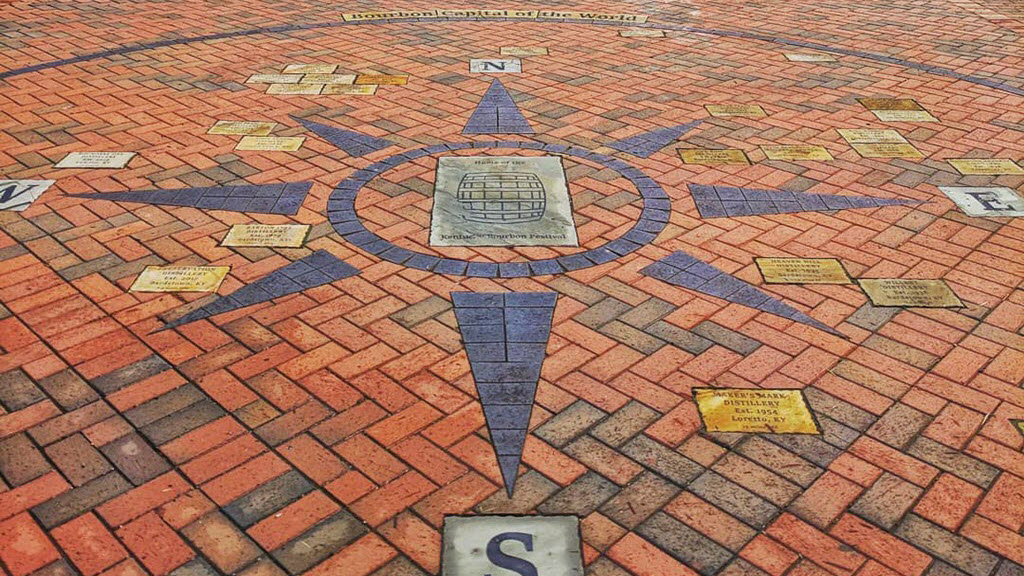
This sample chapter is meant to be like a sample of bourbon poured at your favorite distillery. Now that you’ve had a taste, we hope you will help support the publisher and purchase the entire bottle or in this case the book. You can purchase your own copy of The Rebirth of Bourbon, Building a Tourism Economy in Small-Town, USA book here.
If you are planning a trip to Bardstown, Nelson County or any of the many Kentucky distilleries we have a complete list here to help you get started on your journey . As you are looking at each distillery scroll down on the page and you’ll see nearby distilleries as well as local restaurants and bars to complete your immersive experience.
View all Bardstown, Nelson County Distilleries.
View all Kentucky Distilleries.
Please help to support Distillery Trail. Sign up for our Newsletter, like us on Facebook and follow us on Instagram and Twitter.


